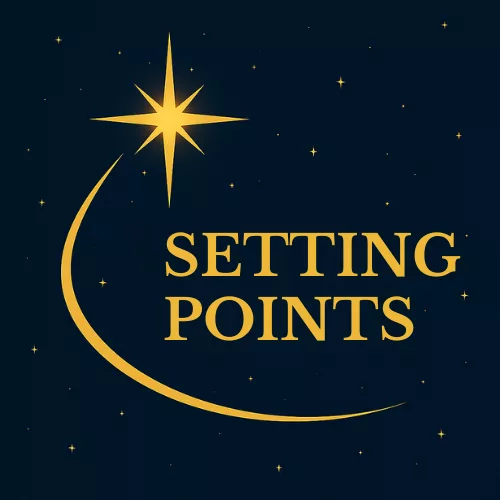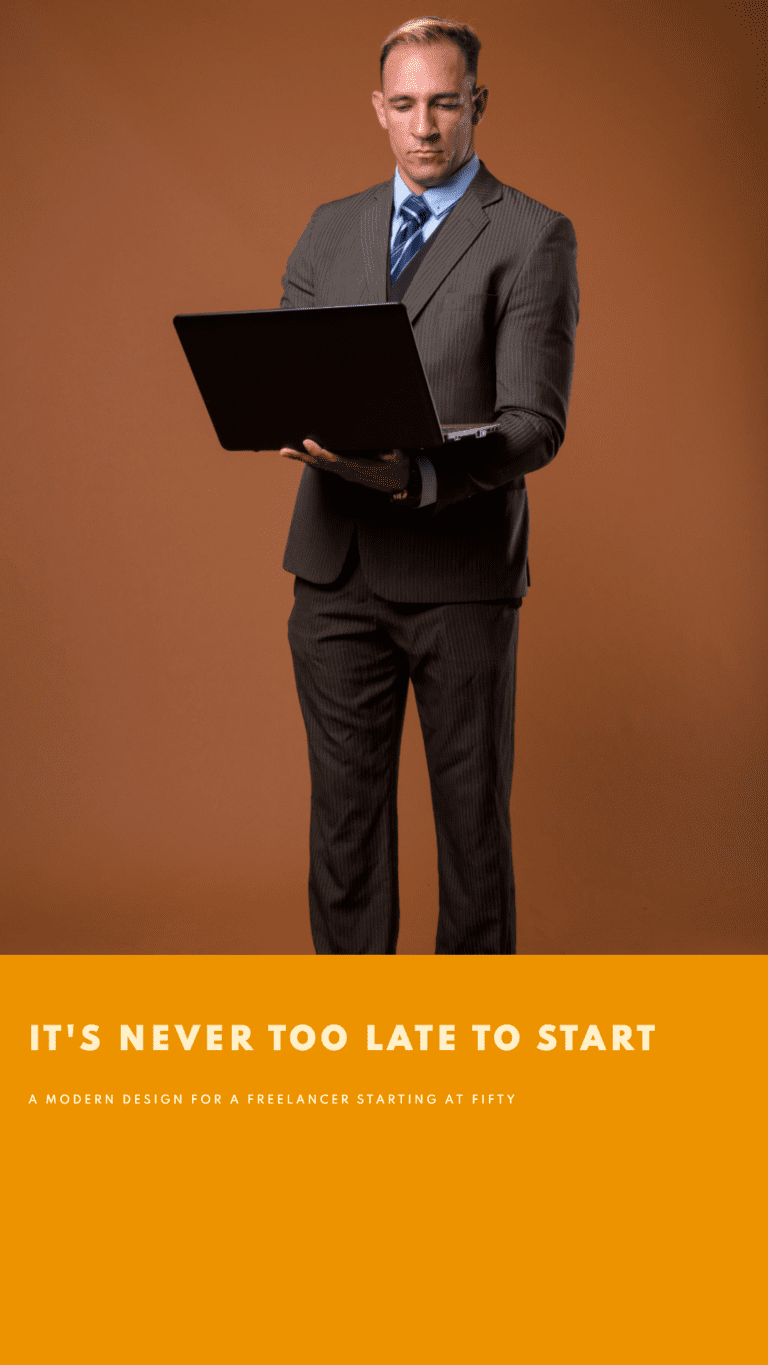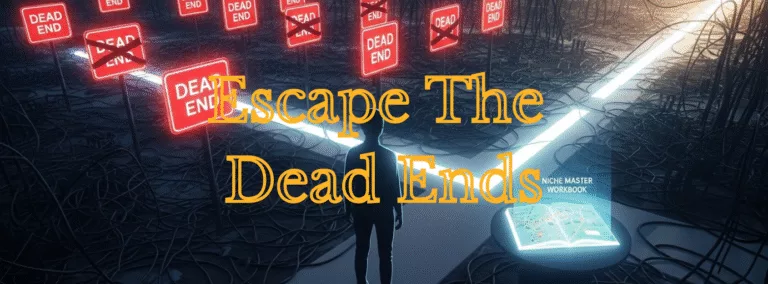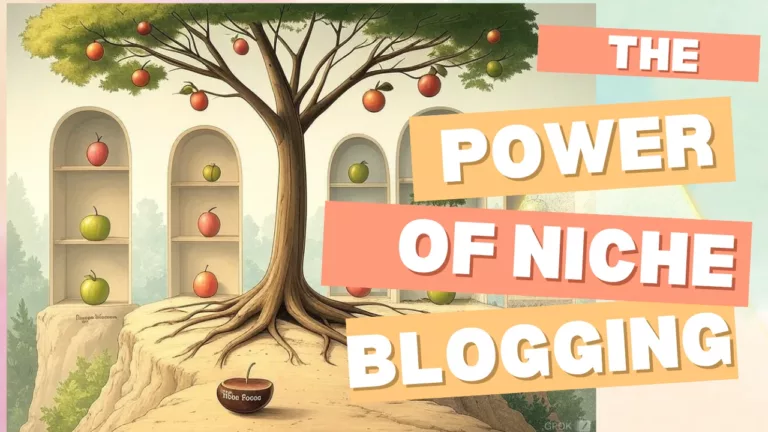You Need Extra Retirement Income or Want to Retire Early?

Are you looking for a way to earn extra income in retirement? Do you have a passion or a skill that you want to share with the world? Do you want to have more freedom and flexibility in your life?
If you answered yes to any of these questions, then freelancing might be the perfect option for you.
Freelancing is a form of self-employment where you offer your services to clients on a project-by-project basis. You can work from anywhere, set your own hours, and choose the projects that interest you.
Freelancing can also be a great way to supplement your retirement income, especially if you have a blog or a website that showcases your expertise and attracts potential clients.
Start Freelancing by the Numbers
But how do you start freelancing? What do you need to know and do to succeed as a freelancer?
In this post, I will guide you through the steps of becoming a freelancer in your 50s. I will also share some tips and resources that will help you along the way.
Step 1: Decide What Services You Want to Offer
The first step of starting a freelance career is to decide what services you want to offer. This will depend on your skills, experience, and interests.
Some of the most popular and profitable freelance services are:
- Writing: You can write blog posts, articles, newsletters, ebooks, sales copy, web content, and more for various clients and niches.
- Editing: You can proofread, edit, and format written content for grammar, spelling, punctuation, style, and clarity.
- Graphic Design: You can create logos, fliers, brochures, infographics, illustrations, and other visual elements for websites, social media, and print media.
- Web Development: You can build websites, apps, plugins, themes, and other web-based solutions using various coding languages and frameworks.
- Social Media Management: You can manage social media accounts, create and schedule posts, engage with followers, run ads, and monitor analytics for different platforms.
- Virtual Assistance: You can provide administrative, technical, or creative support to clients online. This can include tasks such as email management, data entry, research, booking travel arrangements, and more.
These are just some examples of freelance services that you can offer. There are many more options available depending on your skills and preferences.
To decide what services you want to offer, ask yourself these questions:
- What are you good at? What skills do you have that are in demand?
- What do you enjoy doing? What projects make you happy and fulfilled?
- What do you want to learn? What skills do you want to improve or acquire?
- What is your niche? What topics or industries are you knowledgeable or passionate about?
Once you have decided what services you want to offer, write them down in a list. This will help you define your freelance profile and portfolio.
Step 2: Create Your Freelance Portfolio

The next step of starting a freelance career is to create your freelance portfolio. A portfolio is a collection of your best work samples that showcase your skills and abilities. We all have one. You are reading my current portfolio!
A portfolio is essential for attracting and impressing potential clients. It helps them see what you can do and how you can help them with their projects.
To create your freelance portfolio, follow these steps:
- Choose your platform: You can create your portfolio on your own website or blog using WordPress or other tools. Alternatively, you can use the Wealthy Affiliate WordPress Platform (free to its membership base). Depending on your skills, online platforms such as Behance, Dribbble, or LinkedIn allow you to showcase your work easily.
- Select your work samples: You should include work samples that are relevant to the services that you offer and the niche that you target. You should also choose work samples that demonstrate your range of skills and styles. Ideally, you should have at least 3-5 work samples for each service that you offer.
- Write descriptions: For each work sample, write a brief description that explains what the project was about, what the client’s goals were, what challenges you faced, what solutions you provided, and what results you achieved. You should also include relevant keywords that match the type of project and service.
- Add testimonials: If possible, add testimonials from your previous clients that highlight your quality of work, professionalism, communication skills, and value. Testimonials can boost your credibility and trustworthiness as a freelancer.
- Update regularly: You should update your portfolio regularly with new and improved work samples. This will show that you are active and constantly learning and growing as a freelancer.
Step 3: Find Your First Clients
The third step of starting a freelance career is to find your first clients. This can be challenging, especially if you are new to freelancing and have no reputation or network.

However, there are many ways to find your first clients, such as:
- Ask for referrals: You can ask your friends, family, colleagues, or former employers if they know anyone who needs your services. You can also ask them to recommend you to their contacts or share your portfolio on their social media.
- Use social media: You can use social media platforms such as Facebook, Twitter, Instagram, or LinkedIn to promote your services and portfolio. You can also join groups, communities, or hashtags that are related to your niche and interact with potential clients.
- Use freelance platforms: You can use freelance platforms such as Upwork, Fiverr, Freelancer, or Guru to create your profile and bid on projects that match your skills and interests. You can also browse through the posted projects and contact the clients directly.
- Use job boards: You can use job boards such as ProBlogger, FlexJobs, Indeed, or Monster to search for freelance opportunities that are posted by clients. You can also subscribe to newsletters or alerts that notify you of new postings.
- Use cold emailing: You can use cold emailing to reach out to potential clients that you find online. You can use tools such as Hunter or Voila Norbert to find their email addresses. You should write a personalized and professional email that introduces yourself, explains how you found them, showcases your portfolio, and proposes how you can help them.
To find your first clients, you should use a combination of these methods and experiment with what works best for you. You should also be persistent and patient, as it may take some time and effort to land your first projects.
Step 4: Set Your Rates and Terms
The fourth step of starting a freelance career is to set your rates and terms. This is an important step that will affect your income and satisfaction as a freelancer.
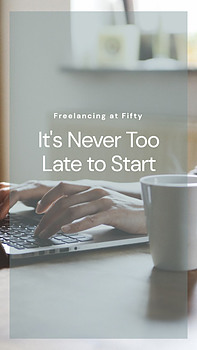
There are different ways to set your rates, such as:
- Hourly rate: You charge by the hour based on the time you spend working on the project. This is suitable for projects that are unpredictable or require frequent revisions.
- Fixed rate: You charge a fixed amount based on the scope and complexity of the project. This is suitable for projects that are well-defined and have clear deliverables and deadlines.
- Value-based rate: You charge based on the value or impact that you provide to the client. This is suitable for projects that have high potential returns or benefits for the client.
To set your rates, you should consider factors such as:
- Your skills and experience: The more skilled and experienced you are, the higher you can charge.
- Your niche and market: The more specialized and in-demand your niche is, the higher you can charge.
- Your expenses and goals: The more expenses you have and the more income you want to earn, the higher you need to charge.
- Your competition and clients: The more competition you have and the more budget your clients have, the lower or higher you need to adjust your rates.
You should also research the average rates for your niche and service using tools such as Bonsai or PayScale. You should also test different rates and see what works best for you.
In addition to setting your rates, you should also set your terms, such as:
- Payment method: How do you want to get paid? You can use online payment platforms such as PayPal, Stripe, or TransferWise to receive payments from clients.
- Payment schedule: When do you want to get paid? You can ask for a deposit upfront, a milestone payment during the project, or a final payment upon completion.
- Contract: Do you need a contract? A contract is a legal document that outlines the scope, deliverables, deadlines, payment terms, ownership rights, confidentiality clauses, and other details of the project. A contract can protect you and your client from disputes or misunderstandings. You can use tools such as Bonsai or HelloSign to create and sign contracts online.
- Communication: How do you want to communicate with your client? You can use email, phone, video call, chat, or other tools to communicate with your client. You should also agree on the frequency and mode of communication that suits both parties.
You should communicate your rates and terms clearly and confidently with your client before starting the project. You should also negotiate if necessary and reach a mutual agreement that satisfies both parties.
Step 5: Deliver Quality Work and Get Feedback

The fifth and final step of starting a freelance career is to deliver quality work and get feedback. This is the step that will determine your reputation and success as a freelancer.
To deliver quality work, you should follow these tips:
- Follow the instructions: You should follow the client’s instructions and specifications carefully and accurately. You should also ask for clarification or confirmation if you are unsure or confused about anything.
- Meet the deadlines: You should deliver your work on time or even ahead of schedule. You should also communicate with your client if you encounter any delays or difficulties that might affect your delivery.
- Proofread and edit: You should proofread and edit your work before submitting it to the client. You should check for grammar, spelling, punctuation, style, and formatting errors. You should also use tools such as Grammarly or Hemingway to improve your writing quality.
- Add value: You should go above and beyond the client’s expectations and add value to your work. You can do this by providing suggestions, insights, or extra features that can enhance the project’s outcome or impact.
To get feedback, you should follow these steps:
- Ask for feedback: You should ask your client for feedback after delivering your work. You should also thank them for their business and express your interest in working with them again.
- Receive feedback: You should receive feedback from your client with an open mind and a positive attitude. You should also acknowledge and appreciate their feedback, whether it is positive or negative.
- Learn from feedback: You should learn from the feedback that you receive and use it to improve your skills and services. You should also implement the feedback in your future projects or revisions.
Delivering quality work and getting feedback are essential for building trust, loyalty, and satisfaction with your clients. They are also crucial for growing your freelance career and achieving your goals.
Successfully Freelancing at Fifty
In this post, I have shown you how to start a freelance career in your 50s. I have explained the steps, tips, and resources that you need to know and do to succeed as a freelancer.
Freelancing can be a great way to earn extra income in retirement, especially if you have a blog or a website that showcases your expertise and attracts potential clients.
But freelancing is not easy. It requires hard work, dedication, and continuous learning. It also involves challenges, risks, and uncertainties.
That’s why you need to be prepared, focused, and motivated. You need to have a clear vision of what you want to achieve and how you want to help others with your skills and services.
You also need to have a supportive community of other freelancers who can inspire you, guide you, and encourage you along the way.
That’s why I invite you to join my email list and get access to my free resource library. There you will find more tips, tools, and templates that will help you start and grow your freelance career.
You will also get updates on my latest blog posts, where I share more insights and stories on how to retire early with blogging and affiliate marketing.
To join my email list and get access to my free resource library, just enter your name and email address below. You will also receive a confirmation email with a link to the resource library.
I hope you enjoyed this post and found it useful. If you have any questions or comments, please feel free to leave them below. I would love to hear from you and help you with your freelance journey.
Thank you for reading and happy freelancing!
